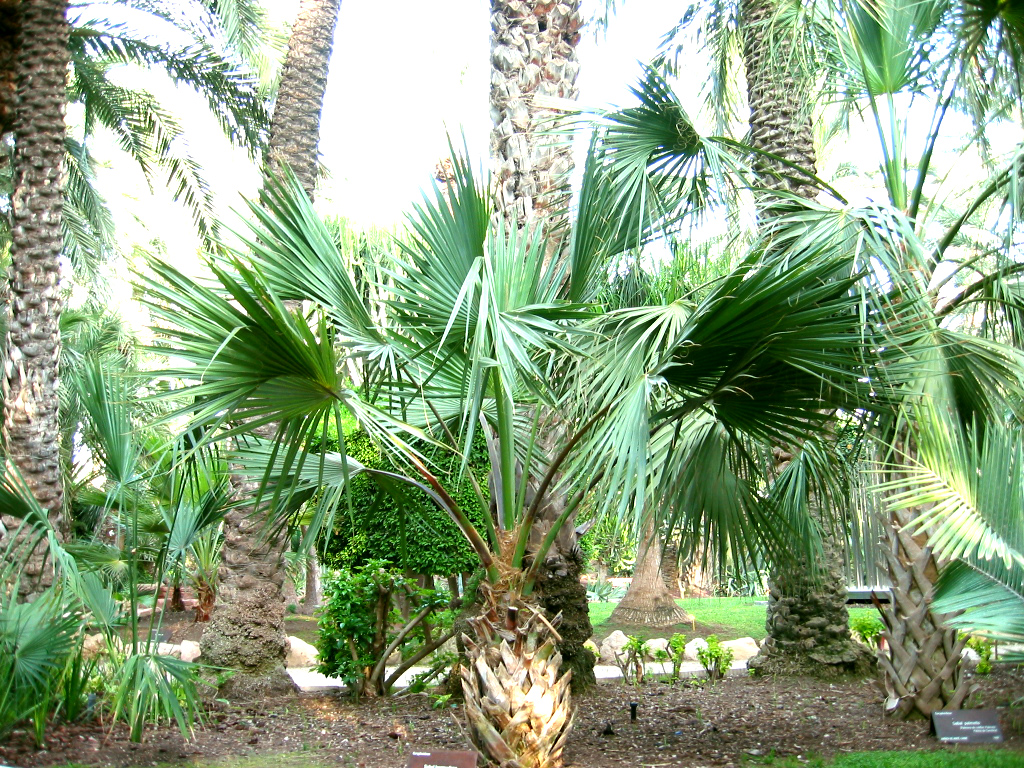- Sabal bermudana
taxobox
name = "Bermuda Palmetto"
image_caption = A Bermuda Palmetto in a Spanish botanical garden.
status = EN
status_system = IUCN2.3
regnum =Plantae
unranked_divisio =Angiosperms
unranked_classis =Monocots
unranked_ordo =Commelinids
ordo =Arecales
familia =Arecaceae
genus = "Sabal "
species = "S. bermudana"
binomial = "Sabal bermudana"
binomial_authority = L. H. Bailey|"Sabal bermudana", also known as Bermuda Palmetto, Palmetto, is one of 15 species of palmetto palm (Arecaceae, genus "Sabal"). It is endemic to
Bermuda . It was greatly effected by the introduction of non-native plants such as the Chinese Fan-Palm, which created competition for space which it usually lost."Sabal bermudana" grows up to 25m in height, with the occasional old tree growing up to 30m in height, with a trunk up to 55cm in diameter. It is a fan palm (Arecaceae tribe Corypheae), with the leaves with a bare petiole terminating in a rounded fan of numerous
leaflets . Eachleaf is 1.5-2 m long, with 45-60 leaflets up to 75 cm long. Theflowers are yellowish-white, 5 mm across, produced in largepanicle s up to 2.5 m long, extending out beyond the leaves. The fruit is a deep brown to black drupe about 1 cm long containing a single seed. It is extremely salt-tolerant and is often seen growing near the Atlantic Ocean coast in Bermuda, and also frost-tolerant, surviving short periods of temperatures as low as -14 °C, although it will never get that cold in Bermuda.Bermudians used to use, for a short period, the leaflets of the palm to weave into hats and export them to the
U.K. and other countries. "Sabal bermudana" also had hole drilled into its trunk andsap extracted to make "bibby ", a strong alcoholic beverage.
Wikimedia Foundation. 2010.
